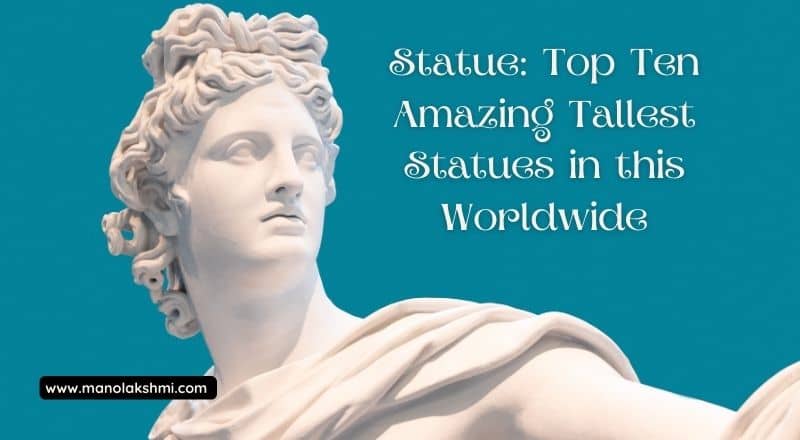Statue, frozen in time, stand as silent witnesses to the past. Crafted from stone, metal, or wood, they depict gods, heroes, and ordinary people. Some statues are lifelike, capturing the essence of their subjects with intricate detail. Others are more abstract, conveying emotions or ideas through simplified forms.
Statues have been used for centuries to commemorate important events, honor individuals, and decorate public spaces. They can be found in temples, museums, parks, and gardens around the world.
Some of the most famous statues include the Statue of Liberty in New York City, the David by Michelangelo in Florence, and the Venus de Milo in Paris.
Statues can be a source of inspiration, awe, and reflection. They can remind us of our history, our culture, and our values. They can also challenge us to think about the world around us and our place in it.
- Statues
- Statue of Unity, India
 Design and Construction:
Design and Construction:- Tourism and Economic Impact:
- Spring Temple Buddha, China
- Statue Laykyun Sekkya Buddha, Myanmar
- Design and Architecture
- Ushiku Daibutsu, Japan: Sculpture
- Statue of Liberty, USA:
- The Motherland Calls, Russia: Statue
- Christ the Redeemer, Brazil: Sculpture
- The Great Sphinx, Egypt:
- David, Italy: Sculpture:
- The Thinker, France:
Statues
Here are some examples of how statues have been used throughout history:
In ancient Egypt, statues were often used to represent gods and goddesses. These statues were believed to be inhabited by the spirits of the deities they represented.
In ancient Greece and Rome, statues were used to commemorate heroes and important events. These statues were often placed in public spaces to inspire citizens and remind them of their history.
In the Middle Ages, statues were often used to decorate churches and cathedrals. These statues depicted religious figures and scenes from the Bible.
In the Renaissance, statues were used to celebrate the human body and the beauty of nature. These statues were often inspired by classical Greek and Roman art.
In the modern era, statues have been used to commemorate a wide variety of people and events. These statues can be found in public spaces, museums, and private collections.
Statues are a powerful form of art that can communicate a variety of messages and emotions. They can be used to educate, inspire, and challenge us. They are also a reminder of our shared history and culture.
Many statues in the world are famous for their size, beauty, history, or symbolism. Here are some facts about the top ten statues in the world, based on their height:
Statue of Unity, India
The tallest statue in the world, measuring 182 meters (597 feet), depicts Sardar Vallabhbhai Patel, a leader of the Indian independence movement and the first Deputy Prime Minister of India. The statue was inaugurated in 2018 and cost about $430 million to build.
The Statue of Unity is a colossal monument dedicated to Sardar Vallabhbhai Patel. One of the most prominent leaders of India’s freedom movement. Standing tall on the banks of the Narmada River in the state of Gujarat, India. This magnificent structure is the world’s tallest statue and a symbol of national pride. Here’s an expanded description of the Statue of Unity:
 Design and Construction:
Design and Construction:
Designed by renowned sculptor Ram V. Sutar, the Statue of Unity stands at a staggering height of 182 meters (597 feet). Making it almost twice as tall as the Statue of Liberty in New York City. The construction of this engineering marvel began in 2013 and was completed in 2018. Over 250 engineers, 3,400 skilled workers, and 250 technicians worked tirelessly to bring this colossal structure to life.
Materials and Structure: Statue
The Statue of Unity is a remarkable feat of engineering, showcasing the use of advanced construction techniques. The statue, crafted from reinforced concrete and adorned with 2,100 bronze panels. Is built to withstand earthquakes, high winds, and extreme weather conditions.
Symbolism and Significance:
More than just a towering structure, the Statue of Unity holds profound historical and cultural significance. Sardar Vallabhbhai Patel, also known as the “Iron Man of India,” played a pivotal role in uniting the princely states and provinces of India into a single, independent nation after the end of British colonial rule. The statue serves as a tribute to his tireless efforts and the unity of the Indian people.
Visitor Experience:
Visitors to the Statue of Unity can take elevators to the observation decks located at different levels within the structure. These vantage points offer breathtaking views of the surrounding landscape, including. The picturesque Sardar Sarovar Dam and the serene Narmada River. A museum at the base of the statue showcases the life and achievements of Sardar Patel, providing visitors. With a deeper understanding of his contributions to India’s freedom struggle.
Tourism and Economic Impact:
The Statue of Unity has become a major tourist attraction in India, drawing millions of visitors from around the world. Its construction has significantly boosted the local economy, creating job opportunities and increasing tourism-related revenue. The surrounding area has witnessed the development of hotels, restaurants, and other infrastructure to accommodate the growing number of visitors.
Statue of Unity: Symbol of Unity, Determination, and Pride
Represents modern India’s spirit.
Represents rich history and legacy of a great leader.
Spring Temple Buddha, China
The second tallest statue in the world, measuring 153 meters (502 feet), represents the Vairocana Buddha, a cosmic aspect of the enlightened mind in Buddhism. The statue was completed in 2008 and is part of a complex that includes a monastery, a museum, and a park.
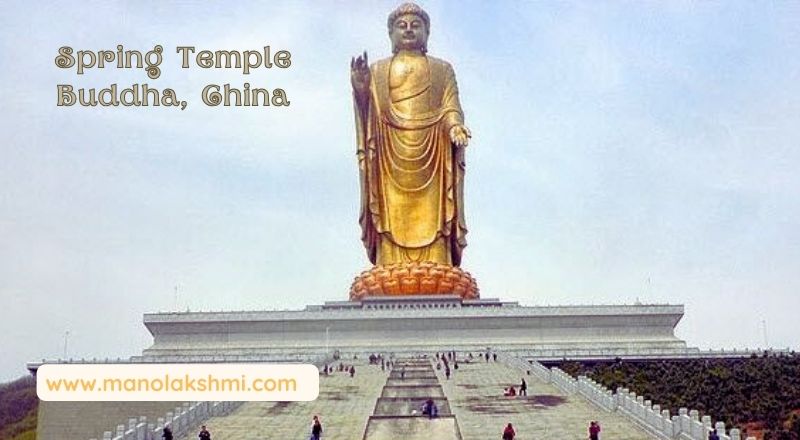 The Spring Temple Buddha is a massive statue of Vairocana Buddha situated in China’s Central Plains region. It is the tallest statue in the world, standing at 128 meters in height (420 feet).
The Spring Temple Buddha is a massive statue of Vairocana Buddha situated in China’s Central Plains region. It is the tallest statue in the world, standing at 128 meters in height (420 feet).
The statue is located in the city of Lushan, Henan Province, China. It was completed in 2002 and is the centerpiece of the Spring Temple Scenic Area. The statue is made of copper and steel and weighs over 1,000 tons.
The Spring Temple Buddha is a popular tourist destination and is one of the most iconic landmarks in China. It is a symbol of peace and harmony and is a reminder of the importance of Buddhism in Chinese culture.
Here are some additional interesting facts about the Spring Temple Buddha:
The statue is so tall that it can be seen from over 20 miles away.
It took over 10 years to build the statue.
The statue is hollow and there is a museum inside it.
The museum contains over 1,000 Buddhist artifacts.
The statue is surrounded by a beautiful park with gardens, fountains, and walking trails.
The Spring Temple Buddha is a UNESCO World Heritage Site.
Statue Laykyun Sekkya Buddha, Myanmar
The third tallest statue in the world, measuring 116 meters (381 feet), depicts the Gautama Buddha, the founder of Buddhism. The statue was finished in 2008 and is surrounded by 20 smaller statues of Buddhist figures.
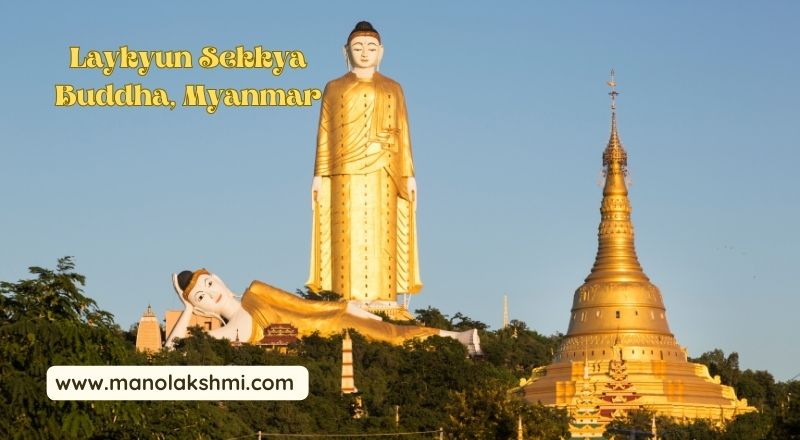 The Laykyun Sekkya Buddha is a massive seated Buddha statue carved out of a single block of white marble. It is located in the village of Laykyun, about 10 miles (16 kilometers) from Monywa, in the Sagaing Region of central Myanmar.
The Laykyun Sekkya Buddha is a massive seated Buddha statue carved out of a single block of white marble. It is located in the village of Laykyun, about 10 miles (16 kilometers) from Monywa, in the Sagaing Region of central Myanmar.
“Buddha Statue: The Largest in the World” Built in 931 by King Anawrahta.
Measures 80 feet high and 64 feet wide.
Surrounded by smaller stupas and temples.
Popular pilgrimage site for Buddhists worldwide.
History
The Laykyun Sekkya Buddha was built during the reign of King Anawrahta, who ruled the Pagan Kingdom from 1044 to 1077. Anawrahta was a devout Buddhist and is credited with introducing Theravada Buddhism to Myanmar. He is also said to have built over 1,000 temples and stupas throughout the country.
The Laykyun Sekkya Buddha was carved out of a single block of white marble that is believed to have been quarried from the nearby Shan Hills. The statue is said to have taken three years to complete.
Design and Architecture
The Laykyun Sekkya Buddha is a seated Buddha statue in the Bhumisparsha mudra, or “earth-touching” position. The statue is depicted with its right hand resting on its right knee and its left hand extended downward, touching the ground. This mudra is said to symbolize the Buddha’s enlightenment and his victory over Mara, the demon of temptation.
The statue is adorned with intricate carvings and decorations. The Buddha’s robe is covered in floral patterns and is adorned with jewelry. The statue’s hair is arranged in a tight bun and its eyes are inlaid with glass.
Religious Significance
The Laykyun Sekkya Buddha’s a sacred site for Buddhists from all over the world. The statue’s believed to be one of the most important Buddhist images in Myanmar and is said to possess miraculous powers. Many people come to the statue to pray and make offerings.
Tourism
The Laykyun Sekkya Buddha is a popular tourist destination. The statue is located in a beautiful and serene setting, surrounded by lush vegetation and mountains. Visitors can ascend to the top of the statue for a spectacular panoramic view of the surrounding area.
Ushiku Daibutsu, Japan: Sculpture
The fourth tallest statue in the world, measuring 110 meters (360 feet), portrays the Amitabha Buddha, a celestial buddha of infinite light and life in Buddhism. The statue was completed in 1993 and has an elevator that takes visitors to an observation deck at 85 meters (279 feet).
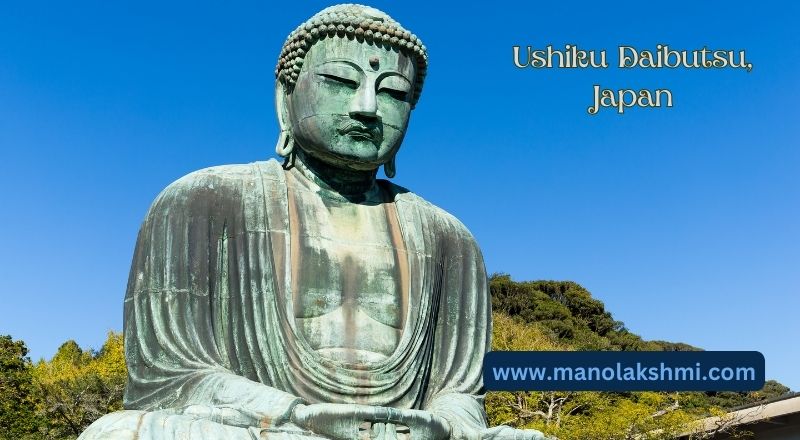 The Ushiku Daibutsu is a colossal statue of Amitabha Buddha located in Ushiku, Ibaraki Prefecture, Japan. Completed in 1993, it is the tallest bronze statue in the world, standing at 120 meters (394 feet) including the pedestal and 100 meters (328 feet) without. The statue is a popular tourist destination and is said to be one of the most spiritual places in Japan.
The Ushiku Daibutsu is a colossal statue of Amitabha Buddha located in Ushiku, Ibaraki Prefecture, Japan. Completed in 1993, it is the tallest bronze statue in the world, standing at 120 meters (394 feet) including the pedestal and 100 meters (328 feet) without. The statue is a popular tourist destination and is said to be one of the most spiritual places in Japan.
Ushiku Daibutsu
The Ushiku Daibutsu was built to honor the memory of Shinran Shonin. The founder of the Jodo Shinshu sect of Buddhism. The statue was designed by Kiyohiko Takeno and constructed by Takenaka Corporation. It is made of 4,000 tons of bronze and is hollow, with an elevator inside that takes visitors to an observation deck at the top. From the observation deck, visitors can enjoy panoramic views of the surrounding area, including Lake Kasumigaura and the Kanto Plain.
The Ushiku Daibutsu is a symbol of peace and compassion. It is a reminder of the importance of Shinran Shonin’s teachings, which emphasize the importance of faith and compassion in attaining enlightenment. The statue’s also a symbol of the strength and resilience of the Japanese people. It was built during a time of economic recession, and it is a reminder that even in the darkest of times, there is always hope.
Every year, the Ushiku Daibutsu attracts millions of visitors from around the world. It is a place of pilgrimage for Buddhists, and it is also popular with tourists who are interested in Japanese culture and history. The statue’s a powerful reminder of the importance of faith, compassion, and hope.
Statue of Liberty, USA:
The fifth tallest statue in the world, measuring 93 meters (305 feet), symbolizes freedom, democracy, and friendship between the USA and France . The statue was a gift from France to the USA in 1886 and was designed by Frédéric Auguste Bartholdi and Gustave Eiffel.
 The Statue of Liberty, located in New York Harbor, is an iconic symbol of freedom and democracy in the United States. Often referred to as “Lady Liberty,” the statue was designed by French sculptor Frédéric Auguste Bartholdi and dedicated on October 28, 1886. Here’s an expanded elaboration on the Statue of Liberty:
The Statue of Liberty, located in New York Harbor, is an iconic symbol of freedom and democracy in the United States. Often referred to as “Lady Liberty,” the statue was designed by French sculptor Frédéric Auguste Bartholdi and dedicated on October 28, 1886. Here’s an expanded elaboration on the Statue of Liberty:
History and Design: Statue
“Statue of Liberty Origins” Originated in late 1860s.
Proposed by French law professor, Édouard René de Laboulaye.
Celebrates centennial of Declaration of Independence.
Bartholdi, known for his colossal sculptures, was chosen to design the statue. The statue’s design was inspired by the Roman goddess Libertas, who represented liberty and freedom. The statue depicts a woman wearing a flowing robe, holding a torch in her raised right hand, and a tablet in her left hand inscribed with the date of the Declaration of Independence, July 4, 1776.
Construction and Dedication:
The statue, designed by Gustave Eiffel, was made from copper sheets and assembled on an iron framework in France, disassembled, and shipped to the United States in 350 crates.
On October 28, 1886, President Grover Cleveland presided over the dedication ceremony of the Statue of Liberty in New York Harbor. The ceremony was attended by thousands of people, including dignitaries from France and the United States.
Symbolism and Significance:
The Statue of Liberty has become an enduring symbol of freedom and democracy for the United States. It stands at the entrance to New York Harbor, welcoming immigrants and visitors from around the world.
The statue’s torch represents the light of liberty and knowledge, while the tablet in her hand symbolizes the law and the principles of democracy. The statue’s crown features 25 windows, representing the 25 stars on the American flag at the time of its dedication.
The Statue of Liberty has been a source of inspiration and hope for generations and remains an important landmark and symbol of the United States.
The Motherland Calls, Russia: Statue
An Iconic Monument of Resilience and Patriotism
The sixth tallest statue in the world, measuring 91 meters (299 feet), commemorates the Battle of Stalingrad, one of the bloodiest battles in World War II . The statue was unveiled in 1967 and depicts a woman holding a sword and calling the Soviet people to fight.
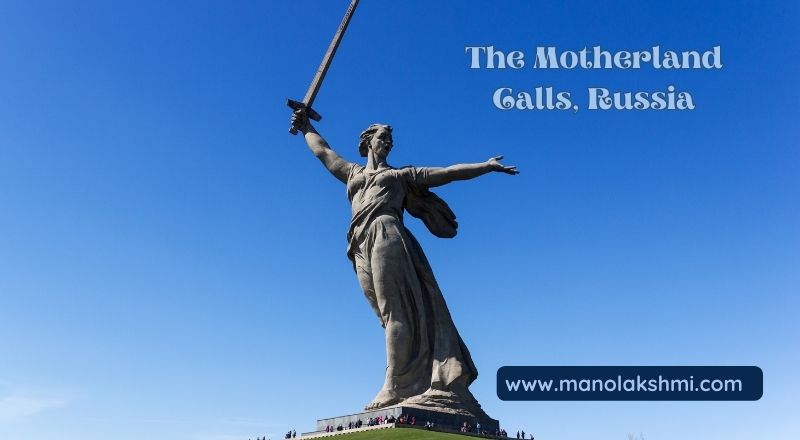 The Motherland Calls is a monumental statue located in Volgograd, Russia, commemorating the Battle of Stalingrad, one of the most significant battles of World War II. This colossal sculpture has become an iconic symbol of resilience, patriotism, and the indomitable spirit of the Russian people.
The Motherland Calls is a monumental statue located in Volgograd, Russia, commemorating the Battle of Stalingrad, one of the most significant battles of World War II. This colossal sculpture has become an iconic symbol of resilience, patriotism, and the indomitable spirit of the Russian people.
Standing proudly on Mamayev Kurgan, a hill overlooking the Volga River, the statue depicts a woman with a sword raised high above her head. At 85 meters tall (279 feet), it is one of the tallest statues in the world and can be seen from miles away. The monument was designed by sculptor Yevgeny Vuchetich and engineer Nikolai Nikitin and completed in 1967.
The Motherland Calls statue:
“Stokespear’s Sacrifices in WWII”
Represents Soviet sacrifices.
Battle of Stalingrad (1942-1943) marked turning point.
Victory over Nazi Germany ended eastward expansion.
The statue’s design is intended to convey a sense of urgency and determination. The woman’s face is filled with emotion, her gaze fixed forward as if calling upon the people to rise and defend their homeland. Her raised sword symbolizes the unwavering resolve of the Russian people in the face of adversity.
Inside the monument, a museum chronicles the history of the Battle of Stalingrad and the making of the sculpture. Visitors can take an elevator to the top of the statue for a breathtaking panoramic view of the city and the surrounding landscape.
The Motherland Call has become a symbol of Russian patriotism and national pride. It is a revered landmark that serves as a reminder of the sacrifices made by previous generations and the ongoing commitment to defending the country’s sovereignty. The statue continues to inspire and unite the Russian people, standing as a testament to their resilience and enduring spirit.
Christ the Redeemer, Brazil: Sculpture
A Majestic Symbol of Faith and Hope
The seventh tallest statue in the world, measuring 38 meters (125 feet), represents Jesus Christ overlooking the city of Rio de Janeiro. The statue was inaugurated in 1931 and is one of the New Seven Wonders of the World.
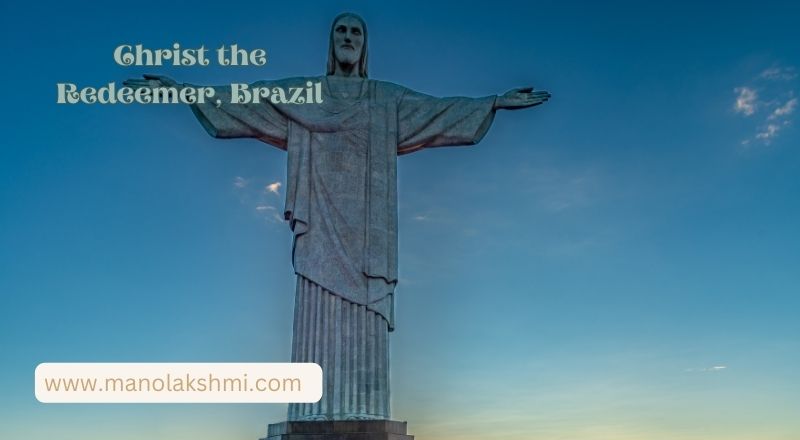 Towering over the vibrant city of Rio de Janeiro, Brazil, stands the iconic statue of Christ the Redeemer – a symbol of Christianity, hope, and national pride. This colossal monument, recognized as one of the New Seven Wonders of the World, attracts millions of visitors each year who come to marvel at its grandeur and spiritual significance.
Towering over the vibrant city of Rio de Janeiro, Brazil, stands the iconic statue of Christ the Redeemer – a symbol of Christianity, hope, and national pride. This colossal monument, recognized as one of the New Seven Wonders of the World, attracts millions of visitors each year who come to marvel at its grandeur and spiritual significance.
A Symbol of Redemption and Divine Protection:
Christ the Redeemer, known locally as “Cristo Redentor,” embodies the message of redemption and divine protection. Its outstretched arms embrace the city, symbolizing Christ’s love and compassion for humanity. The statue’s prominent location atop the Corcovado Mountain provides a constant reminder of God’s presence and watchful care over the people of Brazil.
History and Construction:
The idea for the statue was first proposed in the late 1800s by a Catholic priest named Pedro Maria Boss. Construction began in 1922 and took nearly a decade to complete. Designed by the Brazilian engineer Heitor da Silva Costa and sculpted by the French artist Paul Landowski, Christ the Redeemer stands 38 meters (125 feet) tall, excluding its 8-meter (26-foot) pedestal. It is made of reinforced concrete and soapstone, which gives it a distinctive white appearance.
A Pilgrimage Site and Tourist Attraction:
Christ the Redeemer is a significant pilgrimage site for Christians worldwide. Every year, thousands of devout Catholics and visitors make the arduous trek up the Corcovado Mountain to reach the statue’s base. The journey offers breathtaking views of Rio de Janeiro and the surrounding lush rainforest.
A Symbol of Brazilian Identity:
Beyond its religious significance, Christ the Redeemer holds a special place in the hearts of Brazilians. It represents the country’s rich cultural heritage and its strong sense of national identity. The statue’s presence on various postcards, souvenirs, and stamps showcases its status as an emblem of Brazilian pride and unity.
A Beacon of Hope and Resilience:
In times of adversity, Christ the Redeemer stands as a beacon of hope and resilience for the Brazilian people. Its unwavering presence reminds them of the strength and faith that can overcome challenges. The statue has become a symbol of unity and perseverance, inspiring Brazilians to embrace their cultural diversity and work together toward a brighter future.
Christ the Redeemer, Brazil, continues to captivate and inspire millions of visitors worldwide. Its towering presence not only showcases the country’s artistic and engineering prowess but also serves as a powerful reminder of the human spirit’s capacity for devotion, resilience, and hope.
The Great Sphinx, Egypt:
The eighth tallest statue in the world, measuring 20 meters (66 feet), is a mythical creature with the body of a lion and the head of a human, possibly a pharaoh. The statue is estimated to be over 4,500 years old and is the oldest and largest monolithic statue in the world.
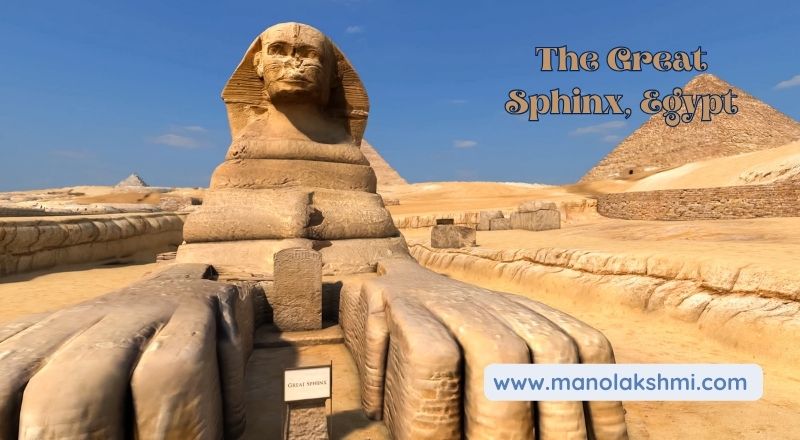 An awe-inspiring monument located on the Giza Plateau, stands as an enduring symbol of ancient Egypt’s rich history and cultural heritage. Carved from a single block of limestone, the Sphinx is the largest known monolith in the world. Its majestic presence, shrouded in mystery and intrigue, continues to captivate visitors from around the globe.
An awe-inspiring monument located on the Giza Plateau, stands as an enduring symbol of ancient Egypt’s rich history and cultural heritage. Carved from a single block of limestone, the Sphinx is the largest known monolith in the world. Its majestic presence, shrouded in mystery and intrigue, continues to captivate visitors from around the globe.
The Sphinx depicts a recumbent lion with a human head, embodying the strength and wisdom of both animals. Measuring approximately 73 meters (240 feet) in length and 20 meters (66 feet) in height, its sheer size exudes an overwhelming sense of grandeur. The Sphinx’s face, believed to represent the Pharaoh Khafre, displays a serene and enigmatic expression, its gaze fixed towards the rising sun.
The Great Sphinx
The origins and purpose of the Great Sphinx remain subjects of scholarly debate and speculation. Some theories suggest that it was built as a guardian of the nearby pyramids. While others propose that it served as a religious or ceremonial center. Its placement in relation to the three pyramids of Giza, the largest of which is the Pyramid of Khufu, further adds to its significance and the mysteries surrounding its construction.
Over the centuries, the Sphinx has endured the ravages of time and natural elements. Its body bears the scars of erosion and vandalism, including a missing nose. Which is believed to have been destroyed by a Sufi Muslim in the 14th century. Despite these challenges, the Sphinx’s enduring presence and iconic status have made it an enduring symbol of Egypt’s ancient past.
Today, the Great Sphinx of Egypt stands as a testament to the remarkable achievements of ancient Egyptian civilization. Its grandeur and enigmatic allure continue to draw millions of visitors each year. Who come to marvel at its size, beauty, and the mysteries it holds.
David, Italy: Sculpture:
The ninth tallest statue in the world, measuring 5.17 meters (17 feet), depicts the biblical hero David, who defeated the giant Goliath with a sling. The statue was sculpted by Michelangelo between 1501 and 1504 and is considered a masterpiece of Renaissance art.
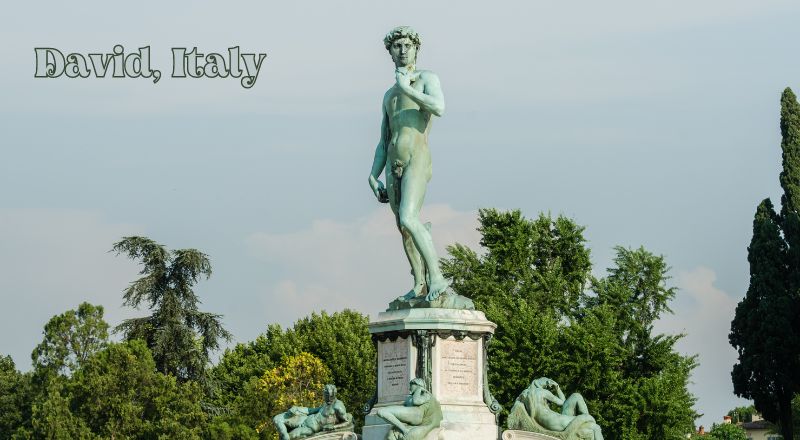 David and Italy are two exceptional individuals whose paths have intertwined in remarkable ways. David, a virtuoso violinist, possesses a talent that enchants all who listen to his melodies. His fingers dance across the strings, effortlessly creating music that touches the deepest corners of the soul. Ital, on the other hand, is a brilliant pianist with an uncanny ability to breathe life into the ivories. Her fingers seem to caress the keys, coaxing forth enchanting tunes that captivate audiences.
David and Italy are two exceptional individuals whose paths have intertwined in remarkable ways. David, a virtuoso violinist, possesses a talent that enchants all who listen to his melodies. His fingers dance across the strings, effortlessly creating music that touches the deepest corners of the soul. Ital, on the other hand, is a brilliant pianist with an uncanny ability to breathe life into the ivories. Her fingers seem to caress the keys, coaxing forth enchanting tunes that captivate audiences.
Their paths crossed when they were both invited to perform at a prestigious music festival. As they rehearsed together, a profound connection emerged between them. “Understanding Music Passion and Harmony”
Shared passion for music.
Unwavering dedication to craft.
Deep appreciation for harmony.
David Italy
Together, David and Ital embarked on a musical journey that would take them to some of the world’s most renowned stages. Their performances were met with standing ovations and rave reviews. As audiences marveled at the seamless blend of their talents. Their music transcended boundaries, speaking to hearts and minds in a universal language that transcended words.
Beyond their shared love for music, David and Italy also found a deep friendship in each other. They supported and encouraged each other through triumphs and challenges, always offering a listening ear and a shoulder to lean on. Their bond was unbreakable, a testament to the power of music to bring people together.
As the years passed, David and Italy continued to share their gifts with the world. They graced concert halls and festivals, leaving audiences in awe of their artistry. Their music became a source of inspiration and joy for countless people. A reminder of the beauty that can be found even in the darkest of times.
David and Ital’s story is a testament to the transformative power of music. The enduring bonds that can be formed through a shared passion. Their journey is one of friendship, artistry, and an unwavering commitment to the pursuit of musical excellence.
The ninth tallest statue in the world, measuring 5.17 meters (17 feet). Depicts the biblical hero David, who defeated the giant Goliath with a sling. The statue was sculpted by Michelangelo between 1501 and 1504 and is considered a masterpiece of Renaissance art.
Visit and support our page: Sculptures: World’s Great Famous Amazing Sculptures
The Thinker, France:
The tenth tallest statue in the world, measuring 1.89 meters (6.2 feet), portrays a man in deep contemplation, possibly representing the poet Dante.
Auguste Rodin’s iconic sculpture, “The Thinker,” stands as a profound representation of contemplation and human intellect. Originally conceived as part of Rodin’s larger work, “The Gates of Hell,”. This brooding figure was later cast as a standalone piece and has since. Become one of the most recognizable works of art in the world.
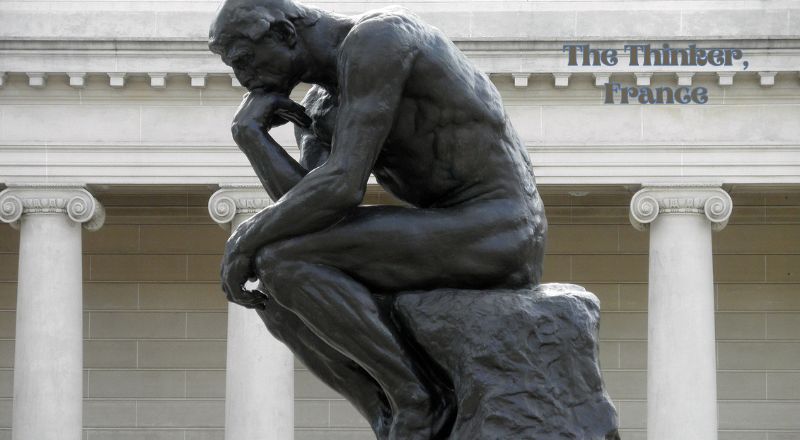
The Thinker
Crafted from bronze, “The Thinker” depicts a solitary figure seated on a rock with his chin resting on his hand. The powerful musculature and intense focus of the subject convey a sense of deep thought and introspection. The figure’s nudity further emphasizes the universality of the human condition, transcending specific cultural and temporal contexts.
Rodin’s “Thinker” has been interpreted in various ways. Some see it as a representation of the artist himself, grappling with the creative process and the complexities of human existence. Others view it as a symbol of mankind’s capacity for contemplation and the pursuit of knowledge. Regardless of its interpretation, the sculpture serves as a timeless. Reminder of the power of thought and the human spirit.
Originally created between 1880 and 1882, “The Thinker” has been cast in numerous versions and is displayed in museums and public spaces worldwide. Its enduring popularity lies not only in its aesthetic beauty. But also in its ability to resonate with viewers on a deeply personal level. Encouraging them to reflect on their own thoughts, emotions, and the broader human experience.
As you stand before “The Thinker,” you can’t help but be drawn into its contemplative embrace. It challenges you to engage in self-reflection, to embrace the complexities of life, and to find moments of stillness and contemplation in an increasingly frenetic world. Whether you find inspiration, solace, or a sense of shared humanity in this iconic sculpture. “The Thinker” continues to stand as a testament to the enduring power of art and the human spirit.
